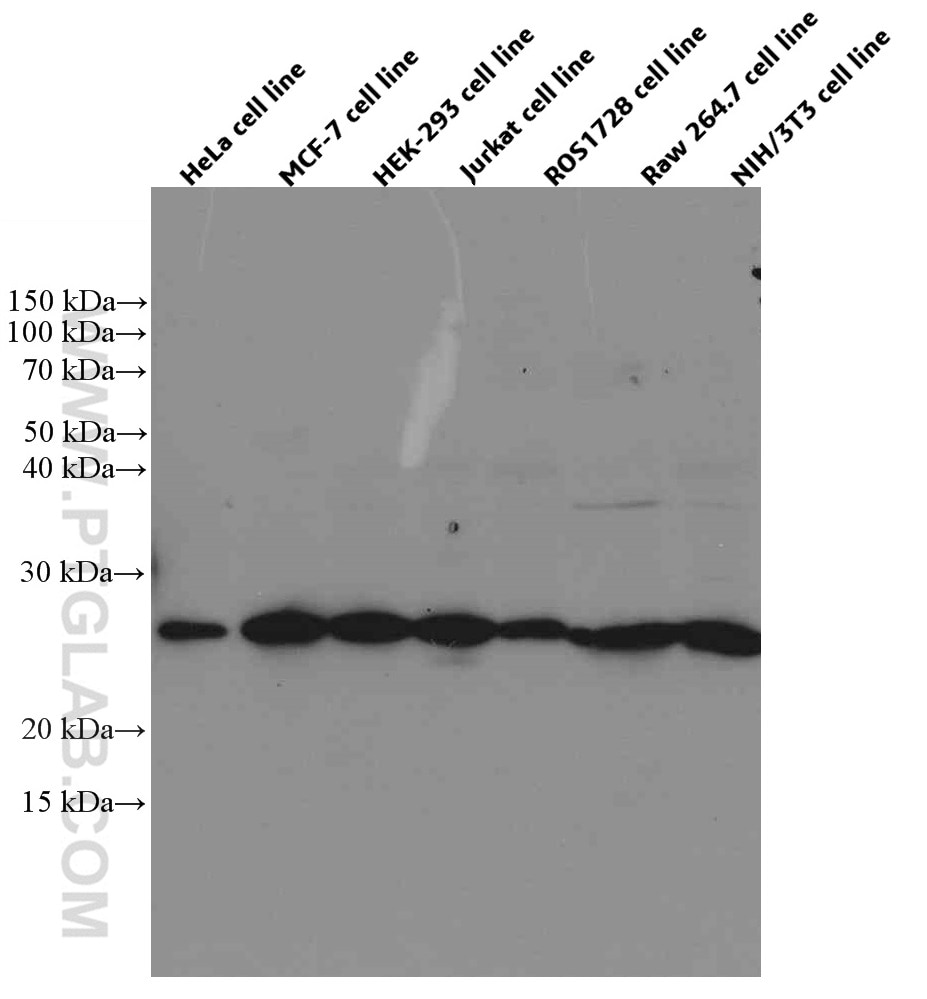PLDN Monoklonaler Antikörper
PLDN Monoklonal Antikörper für WB, ELISA
Wirt / Isotyp
Maus / IgG1
Getestete Reaktivität
human, Maus, Ratte
Anwendung
WB, ELISA
Konjugation
Unkonjugiert
CloneNo.
4F4C11
Kat-Nr. : 66558-1-Ig
Synonyme
Geprüfte Anwendungen
| Erfolgreiche Detektion in WB | HeLa-Zellen, HEK-293-Zellen, Jurkat-Zellen, MCF-7-Zellen, NIH/3T3-Zellen, RAW 264.7-Zellen, ROS1728-Zellen |
Empfohlene Verdünnung
| Anwendung | Verdünnung |
|---|---|
| Western Blot (WB) | WB : 1:500-1:3000 |
| It is recommended that this reagent should be titrated in each testing system to obtain optimal results. | |
| Sample-dependent, check data in validation data gallery | |
Produktinformation
66558-1-Ig bindet in WB, ELISA PLDN und zeigt Reaktivität mit human, Maus, Ratten
| Getestete Reaktivität | human, Maus, Ratte |
| Wirt / Isotyp | Maus / IgG1 |
| Klonalität | Monoklonal |
| Typ | Antikörper |
| Immunogen | PLDN fusion protein Ag18095 |
| Vollständiger Name | pallidin homolog (mouse) |
| Berechnetes Molekulargewicht | 23~24 kDa |
| Beobachtetes Molekulargewicht | 26 kDa |
| GenBank-Zugangsnummer | BC004819 |
| Gene symbol | PLDN |
| Gene ID (NCBI) | 26258 |
| Konjugation | Unkonjugiert |
| Form | Liquid |
| Reinigungsmethode | Protein-G-Reinigung |
| Lagerungspuffer | PBS with 0.02% sodium azide and 50% glycerol |
| Lagerungsbedingungen | Bei -20°C lagern. Nach dem Versand ein Jahr lang stabil Aliquotieren ist bei -20oC Lagerung nicht notwendig. 20ul Größen enthalten 0,1% BSA. |
Hintergrundinformationen
Pallidin, also named as PLDN and PA, is involved in the development of lysosome-related organelles, such as melanosomes and platelet-dense granules. It may play a role in intracellular vesicle trafficking, particularly in the vesicle-docking and fusion process. Pallidin interacts with syntaxin-12 which is a t-SNARE protein that mediates vesicle docking and fusion.
Protokolle
| PRODUKTSPEZIFISCHE PROTOKOLLE | |
|---|---|
| WB protocol for PLDN antibody 66558-1-Ig | Protokoll herunterladen |
| STANDARD-PROTOKOLLE | |
|---|---|
| Klicken Sie hier, um unsere Standardprotokolle anzuzeigen |


